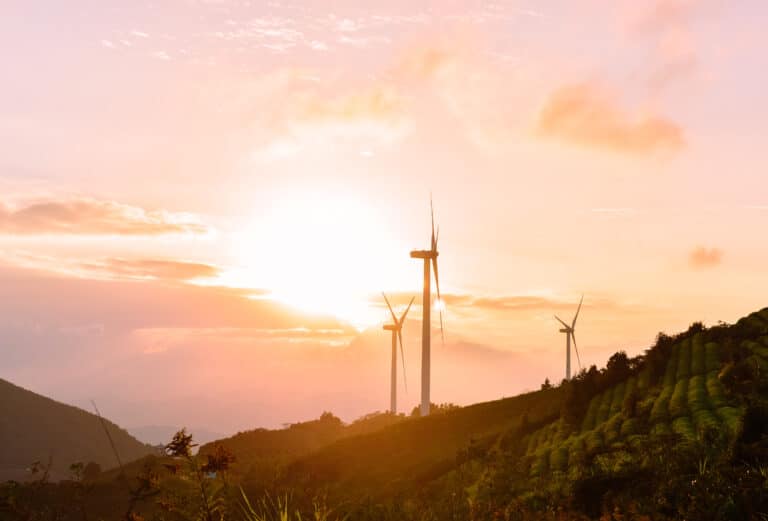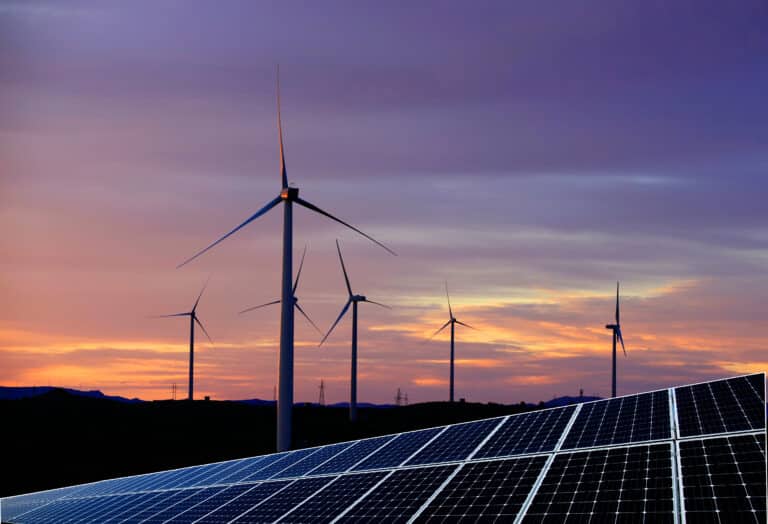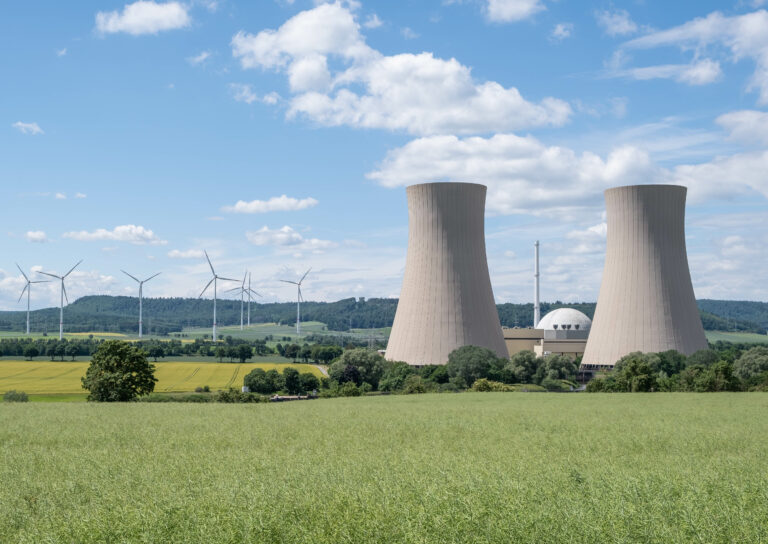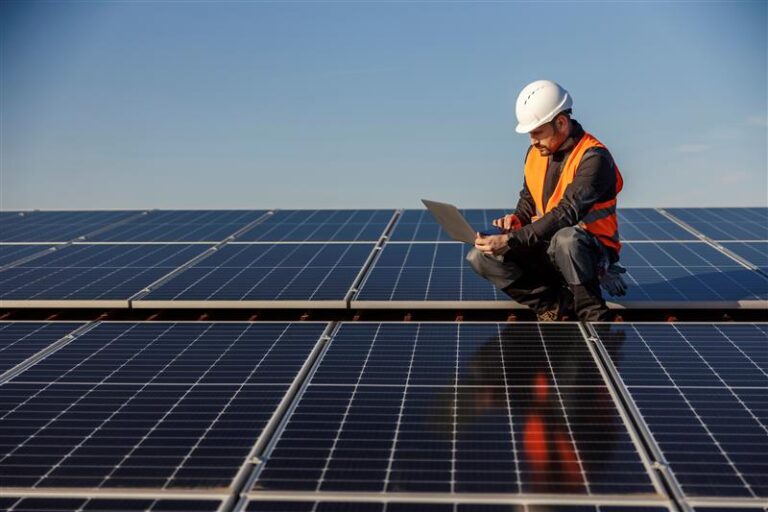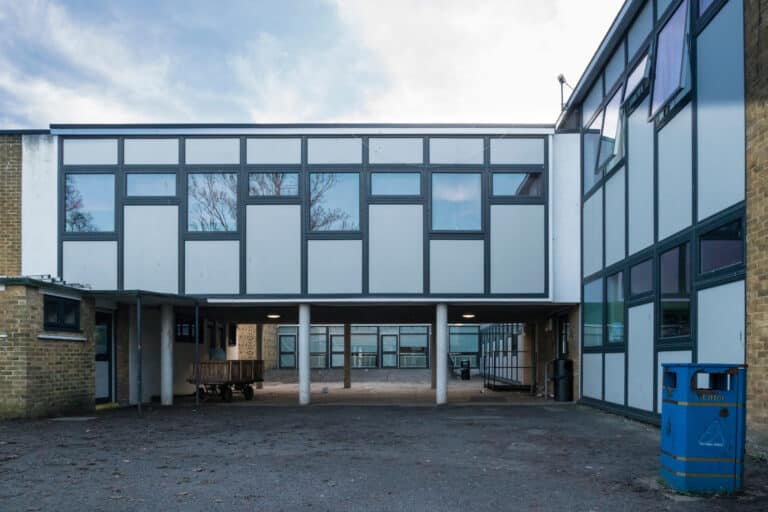Many organisations overlook the benefits of solar PV installations based on myths and half-truths about the technology.
However, clean power will play a key role in the decarbonisation of the UK’s electricity generation. In fact, 32% of the UK’s electricity in 2023 came from burning gas in power stations [i], so let’s look at the opportunities to displace that with clean power in the form of solar PV, which is a viable solution for many non-domestic buildings.
We’ll look at seven common misconceptions and aims to demonstrate that, despite the end of the Feed-In Tariff, solar panels are a worthwhile investment to help achieve your energy, cost, and carbon reduction objectives. We’ll also identify some key points to consider before embarking on a solar PV project.
Myth 1: Solar panels don’t work well in the UK
The UK has perfect conditions for solar panels to successfully produce power.
- Solar power produced 4.9% of total grid electricity in the UK in 2023 [ii] and this figure is steadily rising each year.
- Solar PV installations in the UK have surged, reaching a total capacity of 15.7GW across 1,454,607 installations by the end of January 2024. This represents a 6.6% increase compared to the same period in 2023 [iii].
- Despite domestic installations representing the majority of the solar PV installations in the UK, they only contribute to 29% of the total capacity [iv].
Myth 2: Solar panels don’t work in adverse weather conditions
Solar panels convert daylight into electricity. This does not need to be direct sunshine and so it means the UK weather conditions are suited to successful solar PV electricity generation.
- Cloud Cover – Although it is true that the output of solar panels can be reduced on very cloudy days, some energy will still be generated.
- Cold Temperatures – It is not true that cold weather reduces the effectiveness of solar panels, in fact, very hot weather can have a greater negative impact on their effectiveness.
- Snow – Solar panels will still generate electricity even if they are covered in snow.
- Solar panels will generate more electricity in the spring and /summer months due to more hours of daylight and the sun being higher in the sky. Electricity will still be generated in the winter months despite fewer hours of daylight and the sun being lower in the sky.
Myth 3: Solar panels must be south facing
While it is true that south-facing panels will maximise the potential electricity generation, any direction can generate meaningful power.
- Panels which face east or west can generate around 80% that of a south-facing panel.
- Even panels facing north can generate around 50% that of a south-facing panel [v].
- The angle of the panel as well as the direction will have a factor in generating electricity.
Myth 4: Solar panels require planning permission
Unless you exceed a certain threshold size, planning permission is not usually required on non-domestic solar installations, although there are some exceptions.
- The majority of solar PV projects fall under permitted development rights
- Listed buildings will require planning permission.
- Any buildings in conservation areas or Areas of Natural Beauty will be limited regarding where they can install solar panels. However, installations are still possible provided they are sympathetic towards their surroundings.
- For solar installations near airports or motorways, a glint and glare survey may also be required.
Myth 5: Solar panels are difficult to maintain
Generally speaking, solar PV is ‘fit and forget’, with only limited maintenance required
- Most manufacturers offer a 10-year warranty on solar panels, with a 25-year performance guarantee being the norm.
- Annual checks and cleaning is recommended.
- Costs to replace the inverter at around 10 years should be factored into any budget.
- Keeping the panels clean will maintain optimum generation.
Myth 6: Solar panels are only suitable for specific roof-types
There is virtually no limit to the type of roof that solar panels can be fixed to. Buildings containing asbestos will require specialist contractors.
Solar panels can be installed on:
- Flat roofs
- Tiled roofs
- Corrugated fibre cement roofs
- Trapezoidal sheet metal roofs
- Standing / round seam roofs
- Ground mounts
- Floating solar arrays on lakes
Myth 7: Solar panels are too expensive
Although a solar PV installation is clearly a capital investment, the costs are reducing all the time.
This year the average cost of microgeneration systems between 10 kWp and 50 kWp is around £800 per kWp, offering a very quick return on investment.
What should you consider before investing in solar PV?
Understand your electricity consumption to help size the project correctly. A system that is too small won’t provide much reduction in your energy costs, while a system that is too large will result in the capital costs outweighing what you can sell back to the grid.
Ensure you have actioned simple housekeeping to reduce your general energy consumption. This might seem obvious, but maximising your BMS controls; and a stringent approach to switching off lights and equipment will help to ensure your energy consumption is as lean as possible to maximise the return on investment in solar PV to power your building.
Understand how you will use the power generated to avoid any waste.
Read more about how a solar PV installation could benefit your organisation here. We can provide advice about funding options and help you understand the business case.
Sources:






